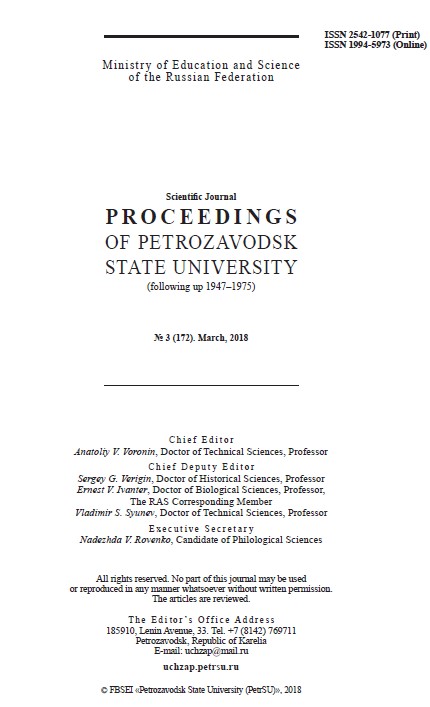EPIPACTIS PALUSTRIS (L.) CRANTZ НА ЗОЛООТВАЛЕ НИЖНЕТУРИНСКОЙ ГРЭС И В ЕСТЕСТВЕННОМ МЕСТООБИТАНИИ
EPIPACTIS PALUSTRIS (L.) CRANTZ OF NIZHNETURINSKAYA POWER STATION ASH DUMP AND NATURAL HABITATS
Author(s): Elena I. Filimonova, Margarita A. Glazyrina, Natalia V. Lukina, Galina G. Borisova, Nadezhda V. Chukina, Maria G. Maleva, Svetlana N. GroshevaSubject(s): Evaluation research, Environmental interactions
Published by: Петрозаводский государственный университет
Keywords: Epipactis palustris; ash dumps; coenopopulation; morphophysiological parameters; mycorrhiza;
Summary/Abstract: The purpose of this research was to study the spatial and age structure of E. palustris coenopopulations. We also studied the morphophysiological parameters and mycorrhizal roots’ association of Epipactis palustris (L.) Crantz, the family of Orchidaceae Juss., which grows on the ash dump of Nizhneturinskaya state district power station (Nizhnyaya Tura, Sverdlovsk region) and in the natural habitat (the coastal area of Bagaryak Lake, Sysertskii district, Sverdlovsk region). It is observed that the density of E. palustris coenopopulations varies considerably from 1 to 54 individuals per m2 on the ash dump and from 5 to 73 individuals per m2 in the control site. The average density was 1.4 times higher in natural habitats. Both coenopopulations were normal polynomials. They refer to the young population by the criterion of ‘delta-omega’. The recovery index was higher in the natural coenopopulation. The morphological analysis showed significant differences in generative E. palustris from the studied sites in the height, the number of flowers and the number of bracts. The height of generative plants growing on the ash dump was on the average 1.2 times smaller. At the same time they formed an average of 1.9 times higher number of flowers than the ones growing in the natural habitat. Moreover, the leaf thickness and the content of photosynthetic pigments did not reveal any significant differences between the populations from both sites.
Journal: Ученые записки Петрозаводского государственного университета
- Issue Year: 2018
- Issue No: 3 (172)
- Page Range: 58-66
- Page Count: 9
- Language: Russian

